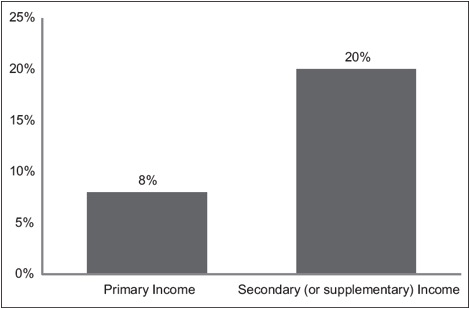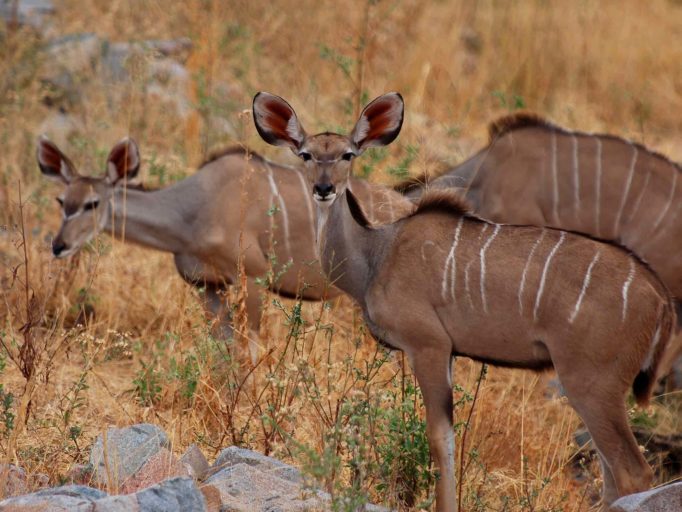- Researchers interviewed 173 self-admitted rural poachers living in the margins of Ruaha National Park in Tanzania to understand why they harvest bushmeat.
- While poverty was a major factor, not all poachers were destitute; a sizeable proportion say they poach to supplement their income.
- How the villagers view their financial status compared to others reflected their poaching activities.
- Conservation strategies should adopt a multidimensional approach to target those who are well-off in addition to the poor, according to the researchers.
A new study published in Conservation and Society probes self-admitted poachers living around Ruaha National Park in Tanzania on the reasons — both objective and subjective — that drive them to poach.
For decades, Africa has been grappling with a poaching crisis that has resulted in precipitous declines in iconic large mammals such as elephants, rhinos, zebras, and gorillas. Some 26,000 elephants, three-quarters of the elephant population in the Ruaha-Rungwa region in Tanzania as of 2009, were killed over a five-year period, for instance. Much of the slaughter has been attributed to organized crime syndicates that are becoming increasingly militarized and employing sophisticated weaponry.
Apart from organized poaching gangs, individual rural villagers are also involved, and poverty is thought to be the main driver. But few studies have explored whether this is actually the case.
The results of the present study confirm the link between poverty and poaching, but they also reveal that many villagers harvest bushmeat to supplement their income and are not among the poorest of the poor, as is often assumed. More importantly, the study reveals that how poachers view their financial status relative to other villagers is a primary influence on poaching habits.
“My assumption was that only extreme or absolute poverty, or desperate situations, would drive people to poach. I had no idea that subjective measures of poverty were equally important,” Eli Knapp, lead author of the study and assistant professor at Houghton College in New York, told Mongabay.
Poachers are usually represented as “greedy,” but after hearing their stories Knapp said he learned that “the vast majority were good people making very rational decisions and doing anything and everything they could to feed their families in the face of yearly environmental stochasticity,” or variability.
In the spring of 2015, Knapp and his team interviewed 173 villagers from three villages situated along the margins of Ruaha National Park, the largest park in Tanzania. Each of the interviewees admitted to currently being involved in poaching or to having poached in the past. The park, located within the Ruaha-Rungwa ecosystem in south-central Tanzania and spanning 45,000 square kilometers (17,000 square miles), is home to a tenth of the world’s lions.
Some of the animals the villagers admitted to frequently poaching were impalas, giraffes, bushbacks, warthogs, elands, and kudus. The top three weapons used for poaching were guns, indiscriminate wire snares, and poison arrows.
A varied group
Indeed, the study does show that poverty is a major driver of poaching. Close to half of the poachers (46 percent) considered their households as poor compared with other village households. These people poached for a longer period and more intensively than those living in average-income households.
Four in five villagers said they engaged in poaching for food or income. Almost all (96 percent) claimed that they would stop if they received income through other means to meet their needs.
But poverty was not the only driver, because over half of the poachers considered their household income as average compared to other villagers. These poachers had a higher proportion of income from non-poaching sources, such as cattle sales or outside employment, than households that considered themselves poor. They possessed more cattle, and a high proportion of them owned motorcycles, both of which enable alternative sources of income, yet they poached at levels on par with households that labeled themselves as poor.
Despite the fact that a third of the poachers had some form of employment, a significant minority (20 percent) still poached to supplement their income beyond their basic needs. Among the remaining two-thirds who lacked employment, only eight percent used poaching as their main source of income.

This shows that poachers are not necessarily mired in absolute poverty, but are moderately poor, and seek to supplement and diversify their income sources for upward mobility.
“While our poachers and their households had adequate food and shelter, most lacked abilities to send children to school, or advance themselves in any meaningful way,” said Knapp. “This is what the 96 percent wants, an ability to educate children and advance themselves beyond year-to-year subsistence.”
Only one respondent, who said he used to poach but no longer did, claimed his household was rich (although his house lacked a tin roof and cement flooring). He attributed his wealth to his large cattle holdings, which the authors believe may serve as a natural mobile bank account that acts as insurance to help overcome environmental uncertainties and reduce the pressure to poach.
“This one respondent helped me understand poaching motivation better than anybody else,” revealed Knapp.
The challenge of mitigating poaching
The study’s findings have huge implications for bottom-up conservation programs that target the poorest of the poor based on the assumption that poverty is the main driver of poaching. The authors say their study suggests that such anti-poaching programs should take a multidimensional approach, instead.
In the 1990s, a bottom-up approach was implemented in Serengeti National Park to sell villagers legally accessed bushmeat for food in order to deter poaching, but it failed because the meat was costly and poached bushmeat was cheaper. And, those who poached for additional income would continue to poach anyway. As a result, the program did not address the motivations of all of the poachers.
On the other hand, top-down measures relying on increasing patrols, arrests, and penalties through law enforcement may be sufficient to prevent poachers who poach to earn extra income, but they will be ineffective for those who do so to meet basic needs, the authors said. Also, if poachers from poor households have to face jail time or penalties, they may lose a significant source of livelihood, forcing other family members to take up poaching.
“Only bottom-up strategies that seek to increase opportunities, capabilities and agency are likely to work for this group,” Knapp suggested.
Poaching is used as a means to make the transition out of absolute or moderate poverty. However, the study makes it clear that poverty isn’t measured merely by the value of one’s assets and whether one’s income is sufficient to meet basic needs, but also by how one views their financial status relative to others around them. Emphasizing the term “relative poverty,” the authors write that “it is important that poachers do not feel poor relative to others in the village they are residing in.”
Social factors also need to be taken into consideration when assessing a household’s vulnerability to unpredictable events. “A household can have very little income but be relatively secure if they have lots of friends and extended familial relations in their local village network. If a drought occurs or elephants damage their crops, these income-poor households can live off the largess of other households they are relationally connected to,” Knapp said.
Overall, the villagers “want to be well off enough to break the cycle of tenuous subsistence living,” Knapp added. “I think this is a pivotal question bottom-up conservationists must face: to what level do households need to be elevated to delink them from poaching?”
Knapp plans to investigate the answer to this question in a future study.

CITATION
- Knapp E.J., Peace, N., & Bechtel L. (2017). Poachers and Poverty: Assessing Objective and Subjective Measures of Poverty among Illegal Hunters Outside Ruaha National Park, Tanzania. Conservat Soc 2017;15:24-32. doi:10.4103/0972-4923.201393